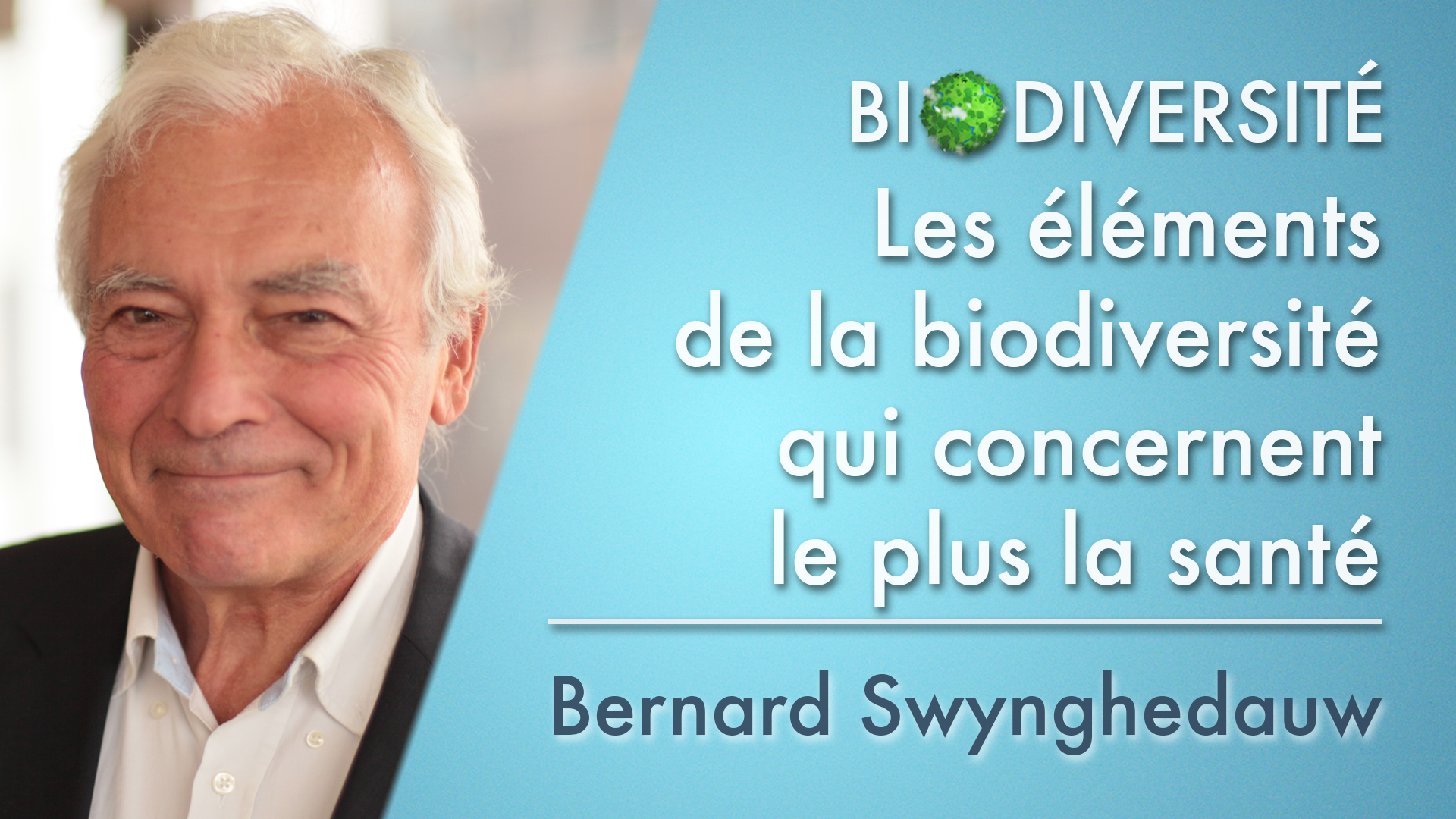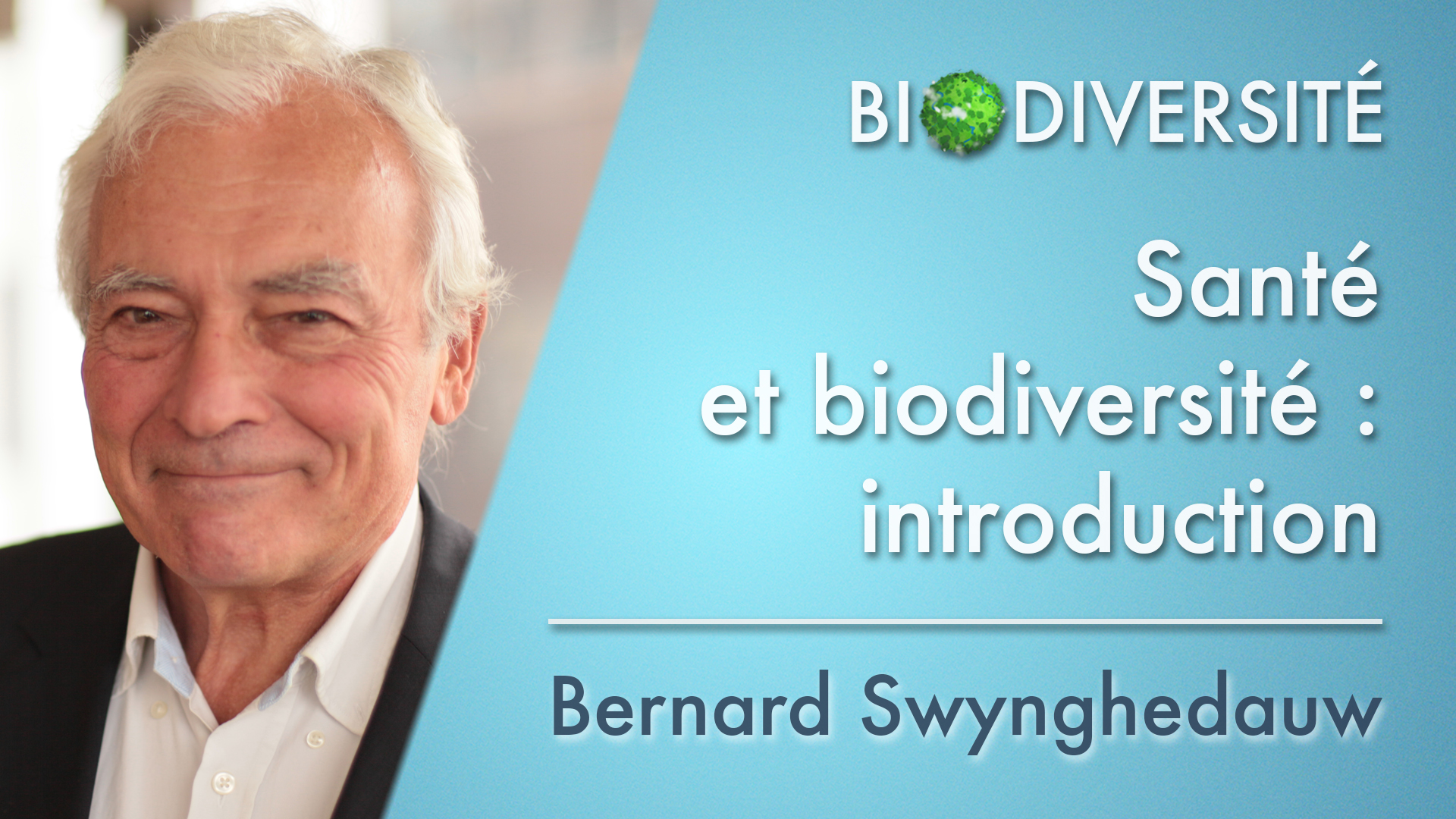Notice
EN-6. Emerging risks and diseases
- document 1 document 2 document 3
- niveau 1 niveau 2 niveau 3
Descriptif
Bernard Swynghedauw proposes an overview of the new medical landscape, marked by the emergence of several risks and diseases. He especially explores the age, the infectious risk and the immune risk, and underlines the necessity to take into account different factors to explain the public health issues.
Dans la même collection
-
Biodiversity and health - Introduction
Bernard Swynghedauw explores with us a still quite unknown biodiversity, which plays an essential role for our development: the microbiota. It consists of all the microorganisms living in our organism
-
EN-9. The urban biodiversity
MachonNathalieWith Nathalie Machon, we will discover the urban biodiversity. She proposes a zoning of cities depending on the extent of the green areas, then she explains the ecological features specific to this
-
EN-3. The microbiota we host: a limited but specific ecosystem
SwynghedauwBernardBernard Swynghedauw comes back to the microbiota we host, that is the bacterial life we coexist and coevolve with. He evidences its distribution inside our organism, some factors which are responsible
-
EN-12. What determines the quality of urban biodiversity ?
MachonNathalieNathalie Machon presents some factors influencing the quality of the urban biodiversity: climate, soil features, age of the habitat, fragmentation and heterogeneity of the green areas... She concludes
-
EN-7. How to achieve a truly comprehensive ecology of health
SwynghedauwBernardBernard Swynghedauw speaks in favour of a truly comprehensive ecology of health. He especially wants to better take into account the microbiota in the public health issues. He also raises the question
-
EN-2. The most biodiversity-related elements to health
SwynghedauwBernardBernard Swynghedauw presents the main groups of living organisms (prokaryotes, eukaryotes, virus), and evokes the link between this biodiversity and the health, insisting on two aspects: the dilution
-
EN-10. The functioning of urban animal and plant populations
MachonNathalieNathalie Machon brings data about the functioning of urban animal and plant populations. The cities are environments marked by an important fragmentation of habitats and by constraining
-
EN-4. Microbial biodiversity changes caused by human activity
SwynghedauwBernardBernard Swynghedauw talks about the microbial biodiversity. He first defines it, then he highlights the changes which affect it, related to the human activities. He also brings us data regarding the
-
Biodiversity and the city - Introduction
The cities still grow all around the world, and are environments which are very modified by humans. The urban living conditions constitute as many constraints as opportunities for the biodiversity. It
-
EN-1. Health and biodiversity: what links
SwynghedauwBernardBernard Swynghedauw defines the biodiversity, the health, and the disease. He evidences the importance of the environmental and / or genetic factors in the appearance of diseases. He also links the
-
EN-11. Services rendered by the urban biodiversity
MachonNathalieNathalie Machon uses the approach of ecosystem services to highlight the interest in preserving and promoting the urban nature: supply services, control services, cultural services and support
-
EN-5. The new medical landscape, emerging risks and diseases
SwynghedauwBernardBernard Swynghedauw proposes an overview of the epidemiological transitions over the last centuries, with a decrease of the mortality linked to the infections, and an increase of the mortality linked
Avec les mêmes intervenants et intervenantes
-
EN-2. The most biodiversity-related elements to health
SwynghedauwBernardBernard Swynghedauw presents the main groups of living organisms (prokaryotes, eukaryotes, virus), and evokes the link between this biodiversity and the health, insisting on two aspects: the dilution
-
EN-5. The new medical landscape, emerging risks and diseases
SwynghedauwBernardBernard Swynghedauw proposes an overview of the epidemiological transitions over the last centuries, with a decrease of the mortality linked to the infections, and an increase of the mortality linked
-
EN-3. The microbiota we host: a limited but specific ecosystem
SwynghedauwBernardBernard Swynghedauw comes back to the microbiota we host, that is the bacterial life we coexist and coevolve with. He evidences its distribution inside our organism, some factors which are responsible
-
EN-7. How to achieve a truly comprehensive ecology of health
SwynghedauwBernardBernard Swynghedauw speaks in favour of a truly comprehensive ecology of health. He especially wants to better take into account the microbiota in the public health issues. He also raises the question
-
EN-1. Health and biodiversity: what links
SwynghedauwBernardBernard Swynghedauw defines the biodiversity, the health, and the disease. He evidences the importance of the environmental and / or genetic factors in the appearance of diseases. He also links the
-
EN-4. Microbial biodiversity changes caused by human activity
SwynghedauwBernardBernard Swynghedauw talks about the microbial biodiversity. He first defines it, then he highlights the changes which affect it, related to the human activities. He also brings us data regarding the
-
3. Le microbiote qui nous habite : un écosystème limité mais particulier
SwynghedauwBernardBernard Swynghedauw revient sur le microbiote qui nous habite, à savoir le monde bactérien avec lequel nous coexistons et nous co-évoluons. Il met en évidence sa distribution au sein de notre
-
5. Le nouveau paysage médical, les émergences et les émergences orphelines
SwynghedauwBernardBernard Swynghedauw propose dans cette intervention un aperçu des transitions épidémiologiques de ces derniers siècles, avec notamment une diminution de la mortalité liée aux infections et un
-
7. Pour une écologie vraiment globale de la santé
SwynghedauwBernardBernard Swynghedauw plaide dans cette présentation pour une écologie globale de la santé, cherchant notamment à mieux prendre en compte le microbiote dans les questions de santé publique. Il pose en
-
6. Les risques et les affections émergents
SwynghedauwBernardDans cette présentation, Bernard Swynghedauw propose un aperçu du nouveau paysage médical, marqué par l'émergence de plusieurs risques et affections. Il explore tout particulièrement l'âge, le risque
-
1. Santé et biodiversité : introduction
SwynghedauwBernardBernard Swynghedauw définit dans cette présentation ce que sont la biodiversité, la santé et la maladie. Il met en évidence l'importance des facteurs environnementaux et/ou génétiques dans l
-
2. Les éléments de la biodiversité qui concernent le plus la santé
SwynghedauwBernardDans cette intervention, Bernard Swynghedauw présente les grands groupes d'organismes vivants (procaryotes, eucaryotes, virus), et évoque le lien entre cette biodiversité et la santé en insistant sur
Sur le même thème
-
Mémoire et identité personnelle
A l’époque moderne, John Locke fait de la mémoire le fondement de l’identité personnelle : l’identité de la personne repose sur la continuité de la conscience dans le temps. La solidarité établie
-
Droits et psychiatrie : conclusions
Jean-Yves CARLIER est professeur en Belgique, à l'Université catholique de Louvain, à l'Université de Liège, aux Facultés universitaires Saint Louis et avocat. Il est ou a été professeur invité dans
-
Urbanisme et épidémies : de l’hygiénisme à l’écologisme
Les épidémies ont eu un rôle décisif dans la naissance et l’évolution de l’urbanisme. L’hygiénisme au XIXème a déterminé l’urbanisme dans sa création et son développement, est-ce que l’écologisme,
-
Les villes ont-elles appris des épidémies ?
A partir d’une mise en perspective historique de la gestion des épidémies dans les villes, on constate la mise en place progressive de mesures de gestion de la contagion. Si le modèle de la
-
État sanitaire = État policier ? L’épidémie, accélérateur des transformations policières (France, X…
Le terme de « police » est sous l’Ancien Régime synonyme d’administration, notamment urbaine et les pouvoirs de police sont répartis entre plusieurs institutions au premier desquelles on trouve les
-
Expérience du cancer et rapports de genre
En partant d'une enquête ethnographique menée dans des services de cancérologie, cette communication vise à interroger l'implication des rapports sociaux de genre, de classe et de génération dans le
-
La médecine moderne entre hyperpuissance et désillusions
La médecine moderne est formidable. Mais… Il semble qu'il y ait un mais ! Ce mais est à l'origine de l'immense questionnement de l'éthique biomédicale, qu'on peut résumer de la sorte : "La médecine
-
Feuilles qui tombent
Dix ans après le premier colloque de Cerisy consacré à Pascal Quignard (2004), qui s'attachait à déchiffrer dans ses livres les figures du "lettré" et sur la ligne des perspectives surgies lors du
-
Les jeudis du Grhapes 2021/2022-Handicap, Éducation et Numérique "La télé-présence mobile au servic…
La télé-présence mobile au service des enfants malades et empêchés de se rendre en classe Intervenants : Laurent Gallon et Françoise Dubergey
-
Les jeudis du Grhapes 2021/2022-Handicap, Éducation et Numérique "La télé-présence mobile au servic…
La télé-présence mobile au service des enfants malades et empêchés de se rendre en classe Intervenants : Laurent Gallon et Françoise Dubergey
-
Le projet Malakit pour lutter contre le paludisme en Guyane
DouineMaylisMaylis Douine, médecin chercheur au Centre d'investigation clinique Antilles-Guyane, présente dans cette vidéo une initiative visant à lutter contre le paludisme au niveau des sites illégaux d
-
Biodiversité et santé, amies ou ennemies
MoutouFrançoisFrançois Moutou, ancien épidémiologiste à l'ANSES, s'intéresse dans cette vidéo aux risques sanitaires liés à la proximité entre les humains et les animaux sauvages. Il montre que ce risque est































